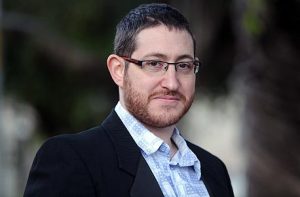27
Yoav Lerman, Tel Aviv University, Israel
This chapter proposes an integration of the work by Robert Cervero and Shlomo (Solly) Angel. Both of these scholars address a few key subjects in the current state of global urbanization. Cervero deals mainly with transit and its power to shape cities in an efficient way, while Angel discusses the coming urban expansion of rapidly urbanizing areas, mainly in the Global South. Combining their insights on urbanization processes leads to the conclusion that expanding cities should take the path of coupling transit and land-use planning while reserving the public rights-of-way needed to accomplish this.
Robert Cervero is an expert on transit and especially on Transit-Oriented-Development (TOD). He has also written the book “The Transit Metropolis” where he made observations on several metro areas and their transit innovations. In the short talk available on YouTube, Cervero goes into detail about the way transit can transform cities. He puts emphasis on integration of public transit and land-use – i.e. dense developments should follow the accessibility provided by the transit systems. Among the more prominent examples that Cervero lays out are Copenhagen’s Finger Plan of 1947, Stockholm’s post-war similar expansion and the Hong Kong’s Mass Transit Railway (MTR) which is quite profitable due to its use of extensive real estate developments above its rail stations. Towards the end of his talk, Cervero mentions that with the invention of BRT (Bus-Rapid-Transit), which the city of Curitiba is famously known for, it is possible to reap the benefits of transit and land-use integration at a much cheaper capital expense than previously thought.
Shlomo Angel has led a significant research effort on world urbanization, which he summarized in his recent book, “Planet of Cities“, and a short video can be found on YouTube. He calls for a paradigm of Making Room, i.e. accepting the fact that rapidly urbanizing metropolitan areas are bound for an explosive land growth, at a much higher rate than their population would grow, while urban densities are destined to decline. He distinguishes between western efforts to contain urban sprawl in stabilized metropolitan areas (many of which sprawled along car dependent suburbanism in the 20th century) and the up and coming metros of the Global South. However, Angel does not mean that a laissez-faire approach is appropriate. As an example he provides is Bangkok, which grew in a massive way in the last three decades while staying affordable, but did not secure any arterial rights-of-way and trunk infrastructure leading to an infrastructure disaster.
Angel calls for securing arterial roads of 25-30m width, at distances upto 1km from each other (so people can walk to future public transit on them). This provision should occur ahead of urban growth and can also be done in advance of slum creation/invasion. This has occurred many times in the city of Lima, resulting in slums capable of relatively smooth improvements over time. As an example of work relating to urban expansion in the Global South Angel points to Ahmadabad in India and a few projects he is involved with in Ethiopia and Colombia.
To conclude, Angel’s realistic city expansion plans should be combined with Cervero’s integrated transit-land use planning recommendations, so our still urbanizing planet follow the efficient path of transit metropolises.
References
Angel, S. 2012. Planet of Cities. Cambridge, MA: Lincoln Institute of Land Policy.
Cervero, R. 1998. The Transit Metropolis: A Global Inquiry. Washington, D.C.: Island Press.
Author Biography
Y oav Lerman is an urbanist with a passion for humane and vibrant cities. He holds a PhD in Geography from Tel Aviv University.
oav Lerman is an urbanist with a passion for humane and vibrant cities. He holds a PhD in Geography from Tel Aviv University.
Contact email: yoavlerman.com.
